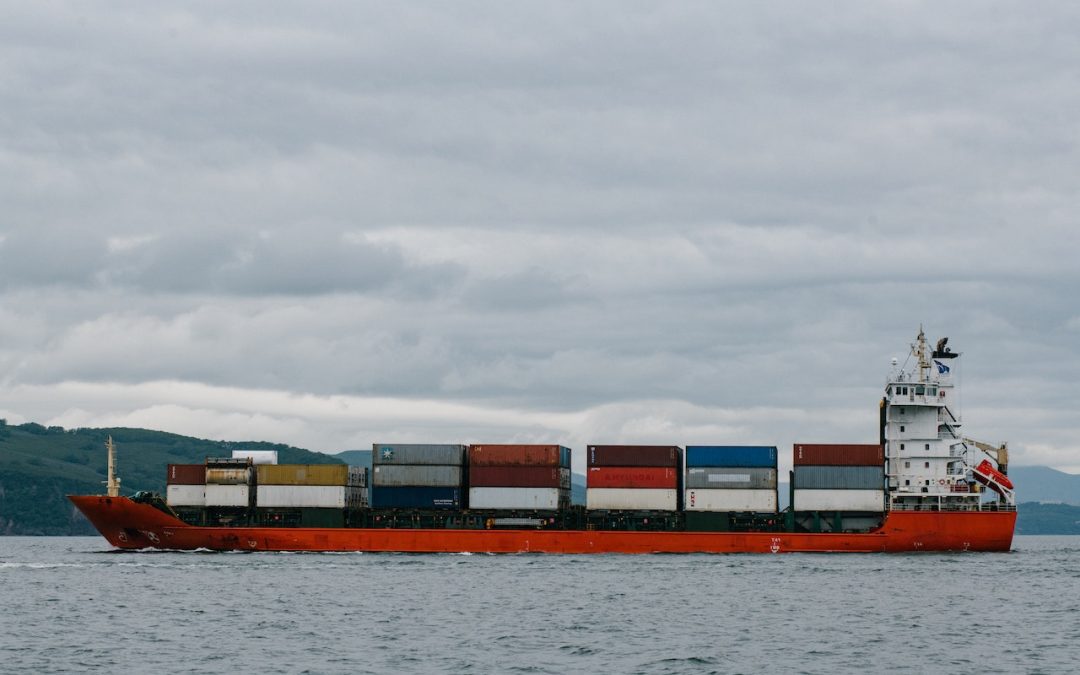Pernah bertanya-tanya bagaimana pengirim barang Anda sampai pada berat yang dikenakan biaya?
Semuanya bermuara pada matematika, tapi itu jauh dari sederhana!
Di blog ini, kami akan segera menghilangkan topik beban yang dikenakan biaya, sehingga Anda mendapatkan pemahaman yang lebih jelas tentang apa artinya bagi pengiriman udara Anda.
Apa itu Berat yang Dikenakan Biaya?
Dalam angkutan udara, ruang adalah hal yang penting. Lebih dari di jalan raya, laut atau kereta api. Tidak seperti metode transportasi lainnya, Anda tidak bisa hanya menggandakan ukuran pesawat jika perlu atau menambahkan gerbong lain yang mengikuti di belakangnya.
Artinya, ukuran muatan Anda perlu diperhitungkan serta berapa beratnya. Inilah cara lain untuk menjelaskannya. Muatan yang besar, namun sangat ringan, dapat memakan ruang 3 muatan yang jauh lebih berat, sehingga membuat perjalanan pesawat menjadi kurang menguntungkan.
Mendapatkan?
Untuk mengatasi hal ini, dirancanglah sebuah sistem yang memperhitungkan semua aspek kargo Anda. Berat yang dikenakan biaya didasarkan pada berat aktual (berat kotor) ATAU berat volumetrik, mana saja yang lebih besar.
Berat sebenarnya
Lucunya, istilah ini mengacu pada berat kargo Anda di kehidupan nyata. Tapi itu tidak hanya mengacu pada barang itu sendiri. Berat tambahan dari setiap kemasan, bantalan, dan palet tempat barang Anda diletakkan juga diperhitungkan.
Oleh karena itu, berat sebenarnya adalah berat kotor kiriman Anda dan biasanya diukur menggunakan sistem metrik untuk memudahkan penghitungan. Agen penanganan darat bertanggung jawab untuk menimbang kargo dan mengeluarkan slip penimbangan, dan nomornya adalah yang tercatat di air waybill.
Berat Volumetrik
Berat volumetrik disebut juga dengan berat dimensional atau berat DIM adalah istilah yang menggambarkan berat muatan berdasarkan kepadatannya dan dihitung berdasarkan dimensi kiriman. Saat perusahaan ekspedisi menentukan berapa biaya yang harus ditagihkan kepada Anda, mereka membandingkan kedua nilai bobot ini untuk melihat mana yang lebih tinggi, dan ini menjadi bobot yang dapat ditagih. Karena beban yang lebih ringan memerlukan lebih sedikit ruang dibandingkan beban yang lebih padat, beban tersebut cenderung dibebankan berdasarkan berat dimensional, sedangkan beban yang lebih berat biasanya dibebankan berdasarkan berat sebenarnya.
Apa Perhitungannya?
Apakah Anda ingin terjatuh dan lari saat melihat kata 'perhitungan'?
Jangan khawatir; itu bukan salahmu. Banyak orang menganggap segala sesuatu yang berhubungan dengan matematika benar-benar berlebihan, dan itu tidak masalah. Itu bukan urusan Anda… tetapi pengetahuan adalah kekuatan!
Tetaplah di sini dan lihat apakah Anda dapat memahami persamaannya – memiliki pemahaman dasar tentang perhitungan di balik beban yang dikenakan biaya berarti Anda dapat memastikan bahwa Anda mendapatkan tarif yang paling hemat biaya di kemudian hari.
Apakah Anda ikut serta? Tarik napas dalam-dalam, dan mari selami.
Cara Menghitung Berat Volumetrik Untuk Angkutan Udara
Untuk menghitung berat volumetrik kargo Anda, Anda harus mulai dengan dimensi kiriman. Agar penjelasannya mudah diserap, bayangkan kita mengirimkan mesin cuci.
Seberapa besar mesin cuci standar? Anda ingin panjang, lebar dan tinggi. Dan kemudian Anda akan melipatgandakannya. Kurang lebih, misalkan panjangnya 60 cm, lebar 40 cm, dan tinggi 82 cm.
Perhitungannya terlihat seperti ini…
60 cm x 40 cm x 82 cm = 196.800 cm3
Langkah pertama selesai. Itu tidak terlalu buruk, bukan? Selanjutnya, Anda membagi totalnya dengan 5000 atau 6000. Ini disebut faktor pembagi, namun bisa juga disebut faktor DIM. 6000 adalah faktor pembagi standar, yang biasa Anda temukan pada sebagian besar operator, namun ada juga yang menggunakan 5000.
Bagi kami, tahap penghitungan ini terlihat seperti ini:
196.800 / 6000 = 32,8kg
Dan itu saja! 32,8kg adalah berat volumetrik mesin cuci kami. Soalnya mesin cuci kita sebenarnya beratnya 60kg. Dan karena pihak ekspedisi menggunakan nilai yang lebih tinggi saat mereka menentukan berapa biaya yang harus ditagih kepada Anda, kali ini berat yang dikenakan akan didasarkan pada berat aktual kargo kami.
Itu tidak terlalu buruk, bukan?
Bagaimana Saya Dapat Mengurangi Berat Badan yang Dikenakan Biaya?
Setelah berat barang Anda yang dikenakan biaya telah dihitung, tidak ada perubahan. Namun jika Anda berpikir untuk mengurangi jumlah tersebut untuk menghemat sedikit tarif angkutan, ada beberapa cara untuk mengatasinya.
Kemasan Lebih Ringan
Berat sebenarnya kargo Anda memperhitungkan bahan pengepakan dan bantalan. Jadi memilih bahan kemasan yang berbobot lebih ringan akan menurunkan angka tersebut. Tentu saja, berat volumetrik barang Anda akan tetap dihitung, dan yang lebih tinggi dari kedua nilai inilah yang dikenakan biaya, namun penyesuaian Anda mungkin akan membuat perbedaan.
Dianggap Pengepakan
Saat agen penanganan darat menghitung berat volumetrik kargo Anda, mereka akan melakukan pengukuran panjang, lebar, dan tinggi. Untuk mengurangi berat yang harus dibayar, pikirkan tentang bagaimana Anda dapat meminimalkan jarak antar produk di palet untuk kiriman berukuran lebih kecil.
Hal ini perlu dilakukan dengan hati-hati untuk memastikan barang Anda tetap aman, karena Anda tidak ingin palet penuh dengan kargo rusak.
Apakah Perhitungannya Sama Untuk Angkutan Jalan atau Laut?
Pada prinsipnya, ya. Latihan tahap pertama, berat volumetriknya tetap sama, jadi panjang, tinggi dan lebar semuanya dikalikan.
Perbedaannya adalah faktor pemisahnya. Ini bervariasi menurut moda pengiriman, dan juga menurut operator. Faktor DIM standar yang diterima adalah:
- Pengiriman kapal untuk angkutan laut – 1:1.000
- Angkutan truk UE untuk angkutan jalan raya – 1:3.000
- Pengiriman ekspres/kurir – 1:5.000
- Angkutan udara: 1:6.000
Yay, lebih banyak matematika…
Kelihatannya menakutkan, tapi perhitungannya tetap sederhana, kami berjanji!
Berolahraga Beban yang Dikenakan Biaya Tidak Seseram Kelihatannya
Matematika tidak harus menjadi musuh. Dan sekarang Anda mengetahui rumus ajaib yang digunakan untuk menghitung biaya pengiriman, Anda dapat memproyeksikan biaya pengiriman dengan lebih akurat.
Tidak bisa memahami angka-angkanya? Untuk itulah kami ada di sini. Jika matematika bukan untuk Anda, hubungi Millennium hari ini, dan kami akan melakukan semua kerja kerasnya untuk Anda.

